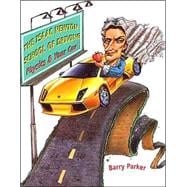
Note: Supplemental materials are not guaranteed with Rental or Used book purchases.
Purchase Benefits
What is included with this book?
| Acknowledgments | p. ix |
| Introduction | p. 1 |
| The Open Road: Basic Physics of Driving | p. 12 |
| All Revved Up: The Internal Combustion Engine | p. 32 |
| When Sparks Fly: The Electrical System | p. 62 |
| "Give 'em a Brake": Slowing Down | p. 88 |
| Springs and Gears: The Suspension System and the Transmission | p. 111 |
| What a Drag: Aerodynamic Design | p. 137 |
| A Crash Course: The Physics of Collisions | p. 159 |
| Checkered Flags: The Physics of Auto Racing | p. 179 |
| Rush Hour: Traffic and Chaos | p. 199 |
| The Road Ahead: Cars of the Future | p. 219 |
| Epilogue: The Final Flag | p. 239 |
| Bibliography | p. 243 |
| Index | p. 245 |
| Table of Contents provided by Ingram. All Rights Reserved. |
The New copy of this book will include any supplemental materials advertised. Please check the title of the book to determine if it should include any access cards, study guides, lab manuals, CDs, etc.
The Used, Rental and eBook copies of this book are not guaranteed to include any supplemental materials. Typically, only the book itself is included. This is true even if the title states it includes any access cards, study guides, lab manuals, CDs, etc.